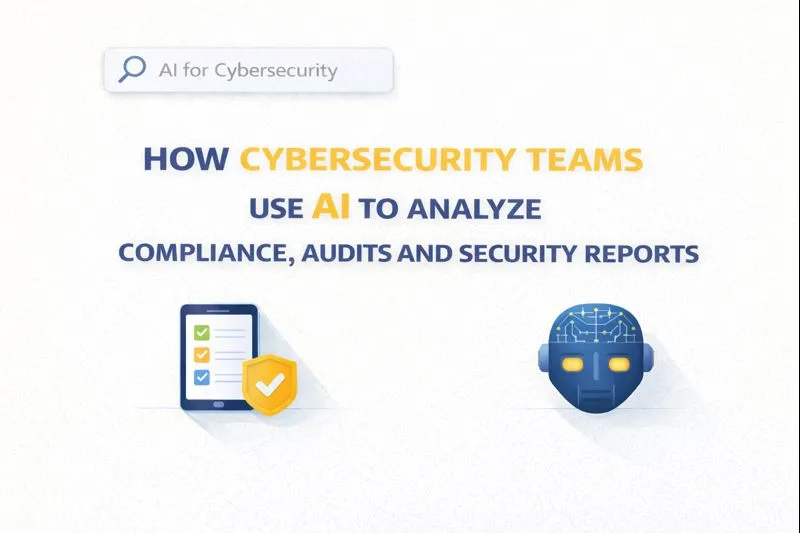AI-Powered Job-Hunting Automation in 2025: The Best Tools to Auto-Apply & Get Hired

Job hunting in 2025 is rough. The average posting attracts about 250 applicants, and research shows you’ll submit roughly 42 applications to land one interview. To keep up, many candidates lean on “apply-for-me” bots that fire off polished resumes the instant a match appears. We’ve tested five standout services—ApplyIQ, LazyApply, Sonara, LoopCV, and Final Round—to see which ones actually save hours without tanking your response rate. Read on to learn how each bot works, where it excels, and when you should jump in yourself.
Automation 101
Picture the familiar “Easy Apply” button running on autopilot. Modern bots sign in to job boards, scan new listings that match your filters, and drop your resume into each form before most people even see the post. Because they store your work history once (title, dates, education), they can fill 50 plus identical fields in milliseconds.
Why is that a win? A typical online application takes 23 to 31 minutes to finish by hand, according to LinkedIn. Multiply that by twelve roles and you lose half a workday to copy-and-paste. Automation cuts the same batch to under five minutes, according to timing tests from several vendors.
You still set guardrails such as location, salary, and seniority. After that, the software handles the grunt work while you spend the freed-up hours on networking or interview prep. In short, bots turn form-filling—mechanical labor with zero added value—into background code that operates at human-friendly speeds and stays within site limits.
From volume to smart matching
Early auto-apply tools relied on brute force. LazyApply still lets determined users send up to 150 applications per day on LinkedIn or Indeed, a number confirmed on the company’s Premium plan page. Recruiters reacted by tightening filters, and most copy-paste resumes never reached a human.
In 2025 the smartest bots changed tactics. Apply IQ, which applies only when your skills match the role and never rewrites your resume, and Sonara now scores each posting against your skills, salary and location before hitting Submit. Testing by job search engine Adzuna found that ApplyIQ’s filter rejects roughly one in five conventional applications and only fires when the match score clears an 80 percent threshold. Because recruiters see fewer but stronger resumes, they spend less time sorting through noise.
Smart matching also rewrites content. AI helpers swap verbs (“managed” → “led”), insert exact keywords from the listing, and add a short, customized cover note before the resume reaches an applicant-tracking system. By using recruiting prompts through Recruit CRM, applicants can prompt automated systems to customize resumes and cover letters more precisely, improving the chance of passing ATS screening.
The impact is clear. A 2025 LinkedIn survey found that personalized resumes are 2.3 times more likely to earn interviews than generic versions. Users who once sent 100 forms without a reply now report an interview invite for one in three tailored submissions. Fewer darts, sharper aim.
Dodging ATS red flags
Applicant-tracking systems now screen 97.8 percent of Fortune 500 careers pages and reject roughly three-quarters of resumes before a human reviews them, according to Jobscan and TopResume. If your materials read like a mass blast, the software buries them.
Smarter bots dodge that outcome. They paste in keywords from the job description, space submissions to mimic human timing, and randomize file names so nothing signals “robot.” When a form includes an open-ended question, top services pause and surface the draft so you can add a ten-second, job-specific answer—just enough polish to clear the filter.
Career coaches still warn against blind volume. One tailored resume beats fifty clones because ATS logic rewards alignment, not activity. Smart automation follows the same rule: fire only when the match score is high, skip the rest, and let real qualifications carry the day.
Ethical and practical limits
A bot can click buttons, but it cannot replace judgment. Wonsulting, an early auto-apply pioneer, shut down its bulk-send feature in August 2025 after clients averaged one interview for every fifty applications (about a 2 percent hit rate). The lesson is simple: volume without relevance wastes everyone’s time.
You also risk breaking site rules. LinkedIn’s User Agreement forbids third-party software that automates activity, and the platform locks restricted accounts until users disable the tool. Indeed’s policy echoes that stance. Smart bots try to mimic human cadence and surface open-ended questions for a quick review, yet responsibility still rests with you.
Treat automation as an assistant, not a stand-in. Let the software handle repetitive fields, then customize a few high-value applications, follow up with hiring managers, and prepare for interviews. That balance protects both your reputation and your account.
The 5 Best Auto-Apply Bots of 2025
A lightning-fast snapshot of pricing, volume, and standout features—so you can spot the perfect auto-apply bot in under 30 seconds.
ApplyIQ by Adzuna, the quality-first autopilot

ApplyIQ lives inside Adzuna’s job search engine, which indexes more than eight million live jobs worldwide. You upload a resume, pick up to eight target titles, and set salary or location ranges. The agent scores each new posting against your profile; when the match passes its threshold, it submits your original resume along with a short AI-written cover note.
The tool moves at a measured pace. Most users receive about five high-match applications per week, enough to stay focused and avoid recruiter fatigue. Early beta feedback looks strong: one healthcare assistant reported callbacks from 70 percent of the applications ApplyIQ filed on her behalf.
Everything runs from a clean dashboard where you can pause, adjust filters, or stop with one click. Because ApplyIQ is free for job seekers, Adzuna positions it as a value add rather than a revenue play, undercutting paid competitors while nudging the market toward responsible automation.
LazyApply, the high-volume blitz bot

LazyApply is a Chrome extension built for sheer reach. On its Premium plan (149 dollars per year) you can fire off up to 150 LinkedIn Easy Apply submissions per day. Load a bank of resumes and short cover snippets, click Start, and watch the counter rise while you focus on other tasks.
To stay under the radar, the bot randomizes click timing, swaps document names, and, when prompted, uses a built-in GPT writer to answer common “Why are you a good fit?” questions. You gain broad reach quickly, but relevance still depends on the filters you set for title, location, and salary.
Limitations matter. LazyApply works almost exclusively with Easy Apply forms, and reviewers note that it sometimes targets roles that miss the mark (for example, internships for senior candidates). Complex applications that request writing samples, coding challenges, or multi-step questionnaires still need a human touch. Use the bot to mow the lawn, then trim the edges yourself.
Sonara, quality at scale

Sonara works like a personal recruiter rather than a simple browser plug-in. During sign-up you answer a short career questionnaire, upload your resume, and choose a plan: Pulse (19.99 dollars per month), Accelerate (49.99 dollars per month), or Amplitude (79.99 dollars per month). Each tier raises the monthly cap to 84, 224, or 420 applications.
Every morning the platform scans job boards, rewrites your resume to mirror each description’s keywords, and submits on your behalf. Because it fires only when the match score is high, most users send 25 to 50 targeted applications per week, according to Sonara’s onboarding guide. The dashboard shows where every resume went and which edits led to callbacks, so you can refine your strategy over time.
For specialists chasing niche roles, that line-by-line tailoring is the main draw. You stay hands-off, yet every submission still sounds like you.
LoopCV, set-and-forget background hunter

LoopCV lives in the cloud like a tireless assistant. After you create a “loop” with target titles, locations, and salary, it scans more than 20 job boards several times a day and applies the moment a match appears. Speed matters because some employers close a posting after the first 50 to 75 applications, according to Workforce.com.
Plans start with a Free tier (ten total applications) and rise to Standard (14.99 dollars per month for 100 applications) or Premium (29.99 dollars per month for 300 applications). Each submission appears in a dashboard that tracks opens and replies and lets you A/B-test two resumes to see which version earns more callbacks.
Set and forget does not mean ignore forever. Prune stale loops or you will field interviews for roles you no longer want. Treat LoopCV as an always-on radar that catches fresh leads while you focus on networking.
Final Round, applications plus interview prep in one tab

Final Round began as a mock-interview coach and later added Auto Apply to bridge the gap between finding a role and acing the call. After you upload a resume and set target roles or companies, the platform:
● Applies to openings the moment they go live
● Tailors each resume with job-specific keywords
● Generates likely interview questions and sample answers within seconds
Pricing is straightforward. The Starter plan (24.99 dollars per month for up to 50 jobs), Pro (49.99 dollars per month for 100 jobs), and Max (74.99 dollars per month for 150 jobs) include the full interview-prep suite and an analytics dashboard that tracks applications, responses, and interviews. Final Round’s site claims users get three times more interviews after switching to Auto Apply, and internal data show an average seven-day time to first interview across 3,500 hires.
The catch is scope. If you pursue hundreds of exploratory roles, the volume caps may feel tight. For job seekers who value built-in coaching as much as automation, though, Final Round delivers a one-stop shop: apply, then rehearse without changing tabs.
Quick comparison at a glance

Prices retrieved September 2025; check each site for current offers.
Conclusion
Automation won’t land the job for you—but it will buy back the hours you need to win it. In 2025, the best “apply-for-me” tools shifted from brute-force blasting to smart matching,resume tailoring, and human-style pacing. Here’s the practical takeaway:
● Use ApplyIQ or Sonara when you want quality-first, keyword-aligned submissions with minimal babysitting.
● Use LoopCV as an always-on radar plus basic A/B resume testing.
● Use Final Round if you want applications and interview prep in one place.
● Use LazyApply only for controlled, filter-tight volume—and step in whenever a form asks anything substantive.
Treat bots as assistants, not substitutes: let them handle forms, then you handle judgment—tight targeting, quick custom notes, warm outreach, and follow-through. That mix keeps you inside platform rules, out of spam buckets, and in more interview rooms.
FAQ
**Do auto-apply tools violate job board rules?
**They can. Some platforms prohibit third-party automation and may restrict accounts that trigger bot-like behavior. Keep volumes reasonable, rotate timing, and be prepared to pause tools if a site warns you.**Will automation hurt my chances with ATS?
**Not if used well. The key is alignment: mirror relevant keywords, keep formatting simple, and avoid sending to roles you don’t fit. Smart tools that tailor content and throttle timing help; mass-blasting generic resumes hurts.**Which tool should I start with if I’m overwhelmed?
**Start “quality-first”: ApplyIQ (free) for high-match applications or Sonara for scaled tailoring. Layer LoopCV for background discovery. Add Final Round if you want built-in interview prep.**How many applications per week is “healthy”?
**Aim for 20–40 targeted submissions/week (or fewer if senior). If you’re sending 100+/day, quality and compliance risks climb while reply rates usually fall.**What should I still do manually?
**Anything that requires judgment or nuance: answering open-ended questions, customizing a short note, submitting writing/code samples, and following up with a human.**How do I keep from applying to the wrong jobs?
**Tighten your filters (title, location, salary, tech stack), exclude keywords you don’t want, and raise match thresholds. Review the queue daily; pause loops that drift.




